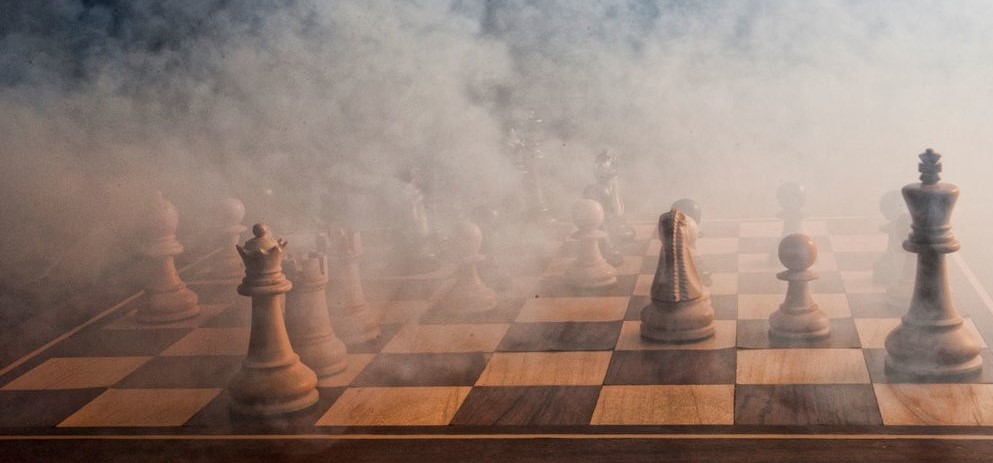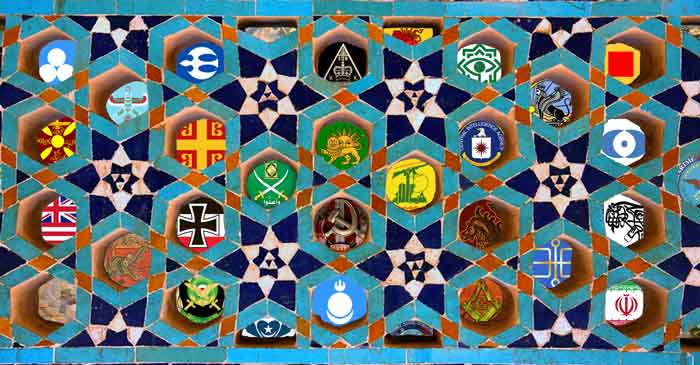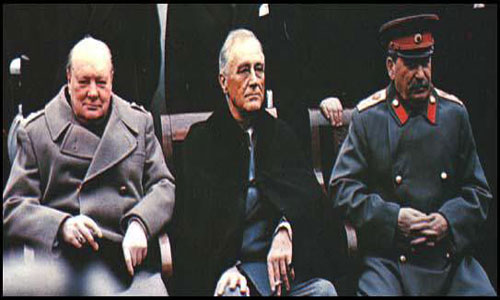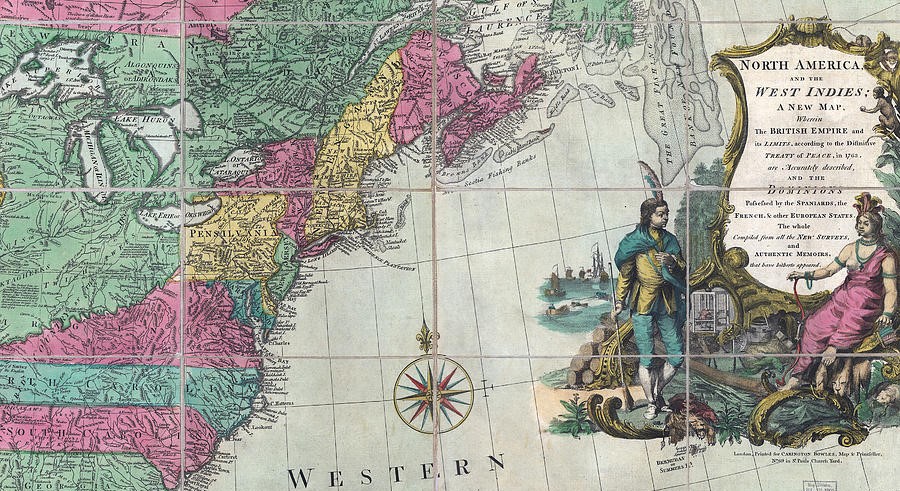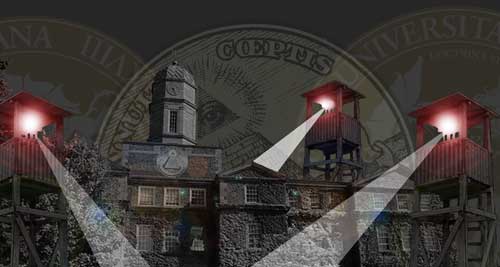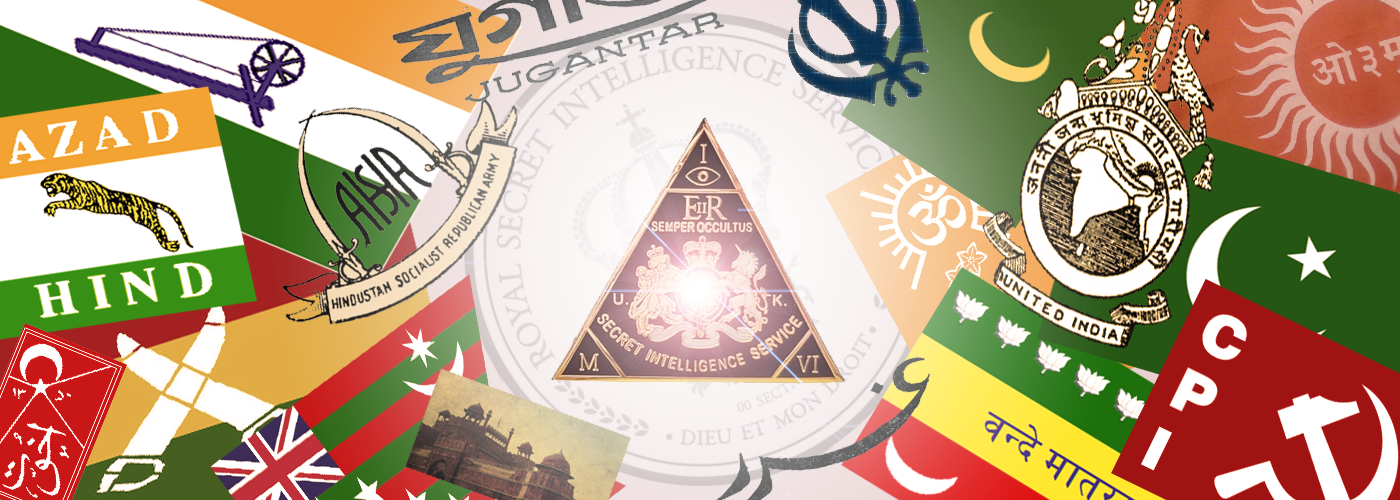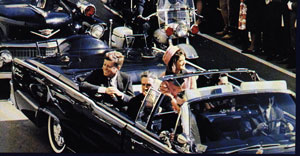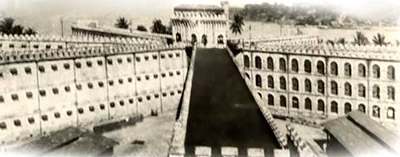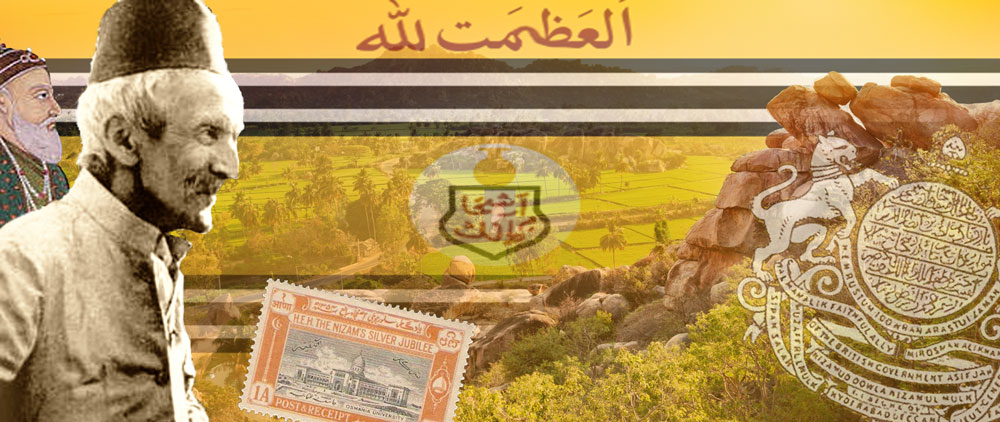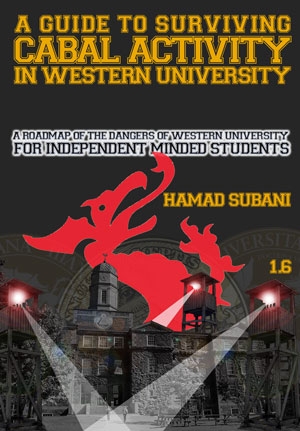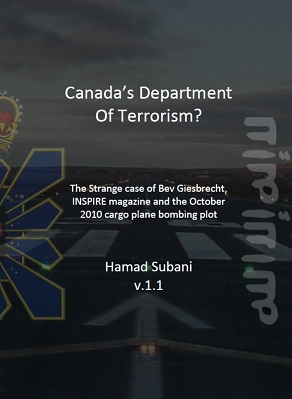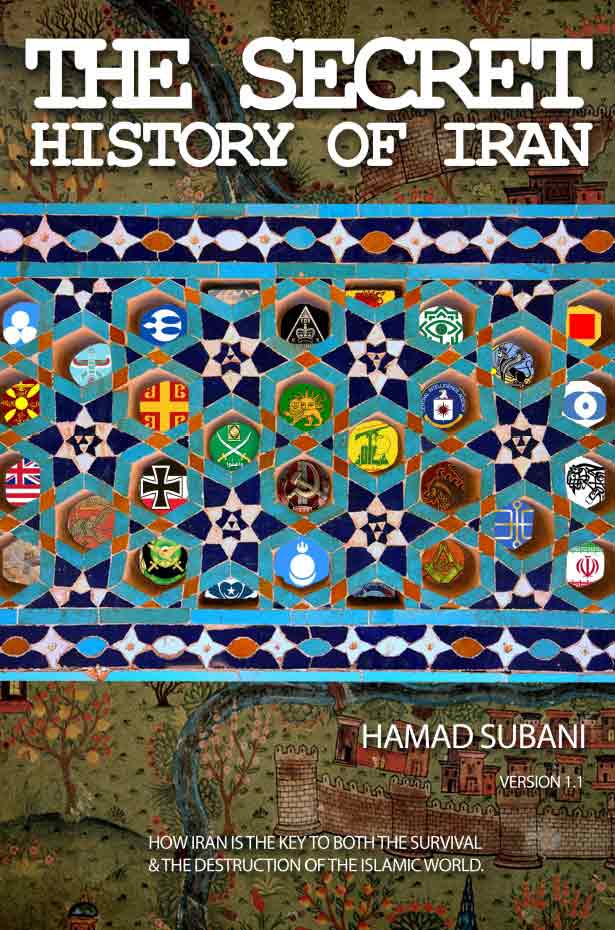
How the Blueprint Unfolded Part II -The Ghadr Party and the Punjab Front

There was a plan for an uprising in almost all the British cantonments in the Punjab, coinciding with World War I, which would then spread to North India, and into Bengal, where it would merge with the uprisings of the Aurobindo network. And again, Savarkar was expected to simultaneously land fighters on the coast of Orissa. This movement was so closely based on the 1857 Project that it was even named Ghadr, which is Urdu/Hindi for Rebellion. The people of British India referred to the 1857 Rebellion as Ghadr in popular literature.

What makes the Ghadr Party so different is that this was a movement initiated exclusively by overseas Punjabis. It was literally “Made in USA.” There was also special emphasis on building Punjabi, especially Sikh cadres. The Spookdom of Punjab was used in the 1857 Project to put an end to Mughal India. Now the Spookdom of Punjab was being mobilized again by the Phoenicians. But this time, it was to play the role of “freedom fighters,” enabling Punjab to have a disproportionate say in post-British India. What an inversion! But again, we have seen weirder things, such as the merger of the Sikh Empire with the British Empire prior to 1857.

The problem was that the Spookdom of Punjab was so loyal to the British that it was nigh impossible to organize a “Freedom Movement” from within. Therefore overseas Punjabis were sent back to India in record numbers to get things started. But the tradition of complete loyalty to the British remained so strong in the common people of the Punjab that the movement spectacularly imploded, with its operatives turning on each other.
To quote,
In 1912–1913, the Pacific Coast Hindustan Association was formed by Indian immigrants under the leadership of Har Dayal, with Sohan Singh Bhakna as its president, which later came to be called the Ghadar Party. With donations raised with the help of the Indian diaspora, especially with the aid of Indian students at the University of California, Berkeley, the party established the Yugantar Ashram at 436 Hill Street where a printing press was set up with the donations. The first Urdu edition of Hindustan Ghadar appeared on 1 November 1913, followed by a Punjabi edition 9 December 1913.
The articles in the paper were initially authored by Har Dayal, with the printing operation run by Kartar Singh Sarabha, then a student of UC Berkeley. Copies of the paper began to be shipped to India with returning Ghadarites and immigrants, and were quickly deemed to be seditious and banned by the British Indian government. Later publications from the Yugantar Ashram [note similarity to Aurobindo’s Jugantar] included compilations of nationalist compositions and pamphlets, including Ghadar di gunj, Talwar and other publications which were also banned from British India.
Note the name Pacific Coast Hindustan Association. This is because 90% of settlers of Indian origin on the Pacific Coast back then were of Punjabi descent. Interestingly, the first issue of Hindustan Ghadar dated 1st November 1913 carried excerpts from Savarkar’s 1857 book project![1]S.N. Agarwal. The Heroes of the Cellular Jail Rev. Edition (New Delhi: Rupa) 175. Its all connected.
Lala Har Dayal Mathur

One of the key figures of this movement was Lala Har Dayal Mathur, a Punjabi who first studied at Oxford. He was an early founder of the Ghadr party. He then moved to USA and was appointed a Professor of Sanskrit and Hindu Philosophy at Stanford.[2]Bhai Parmanand, trans. Sundra Iyer and Lal Chand Dhawan, The Story of my Life (Lahore: The Central Hindu Yuvak Sabha: 1934). p. 60. Strangely, he morphed into a Communist shortly after and became actively involved with various Communist fronts in California. For a foreign immigrant, this would normally result in immediate deportation back then, but it seems American authorities were OK with his activities. It seems he was trying to induct poor migrant labourers of Indian origin into the Ghadr Party.[3]Bhai Parmanand, trans. Sundra Iyer and Lal Chand Dhawan, The Story of my Life (Lahore: The Central Hindu Yuvak Sabha: 1934). p. 66. and send them to the Punjab to organize a Rebellion.
Har Dayal Mathur has to escape from America because he gets connected to the Delhi Conspiracy Case, but according to Savarkar’s memoir, the American government assisted him in his escape from America[4]Vinayak D. Savarkar, The Story of MY TRANSPORTATION FOR LIFE (A Biography of Black days of Andamans) Trans. From the Marathi original Maazi Janmathep by V. N. Naik (Ebook by Chandrashekhar V. Sane, 2016) p. 226. <https://library.bjp.org/jspui/handle/123456789/292> Accessed 12/12/2022. He flees to Germany in 1914 and then becomes involved with German Intelligence. He continues coordinating with Indian Freedom fighters, and pushes Buddhism on them.
Tarak Nath Das

Another early founder of the Ghadr party was an American citizen of Bengali origin named Taraknat Das. In 1908, he was admitted into the Norwich University of Northfield, Vermont, which is the oldest private and senior military college in the United States. He was financially supported by Mary Keating Morse, founder of the NAACP, and he later married her.
Bhai Parmanand

The “Punjabi” Bhai Parmanand was selected as the leader of the Ghadr Party at Lahore. This would technically make him the head of the entire movement in Punjab. Interestingly, he descended from the family of the famous Sikh martyr, Bhai Mati Das, who was executed by Aurangzeb. This could explain his selection as a Ghadr Party leader. He was a close associate of American “Punjabi” Lala Har Dayal Mathur. Both of them along with V. D. Savarkar were hanging out in London before World War I. And like Savarkar, Bhai Parmanand was also associated with another book project related to 1857, which also intended to sell Nana Sahib as a revolutionary leader. Bhai Parmanand was closely connected to fellow-“Punjabi” Lala Lajpat Rai.[5]Bhai Parmanand, trans. Sundra Iyer and Lal Chand Dhawan, The Story of my Life (Lahore: The Central Hindu Yuvak Sabha: 1934). p. 66. Few people know that before Lala Lajpat Rai became associated with spreading communalism in the Punjab, he was giving lectures at Columbia University and Tuskegee University, and hanging out with Communists like M. N. Roy in New York. To quote,
Bhai Parmanand had a close association with the Ghadr leaders and his shop at Machhi Hatta in Lahore was the meeting point for the revolutionaries. He also served as a link between the Punjab Ghadr work and San Francisco headquarters.[6]S.N. Agarwal. The Heroes of the Cellular Jail Rev. Edition (New Delhi: Rupa) 181.
Even in his rather sidetracking autobiography, he admits that he received American gold coins,[7]Bhai Parmanand, trans. Sundra Iyer and Lal Chand Dhawan, The Story of my Life (Lahore: The Central Hindu Yuvak Sabha: 1934). p. 22, 103. presumably from Ghadr Party cadres coming from USA. In Lahore, prior to Ghadr Rebellion in the Punjab, Bhai Parmanand was living in a house in which Ajit Singh and his brother Kishan Singh[8]Kishan Singh was the father of Bhagat Singh were running the head-quarters of an organization called Bharat Mata.[9]Bhai Parmanand, trans. Sundra Iyer and Lal Chand Dhawan, The Story of my Life (Lahore: The Central Hindu Yuvak Sabha: 1934). p. 39. There is a connection between this group and the Urdu Swarajya magazine, also based out of Lahore.[10]One editor of Swarajya would be Sham Dass Verma, who was also editor of Bharat Mata, an official organ of the Bharat Mata Society of Lahore. (S.N. Agarwal. The Heroes of the Cellular Jail Rev. Edition (New Delhi: Rupa) 103.) Some lower level police officials raided this house, and incriminating evidence was found against Bhai Parmanand and the Singh brothers. In fact, the entire Ghadr network was exposed. But the Phoenicians quickly covered it up.
In the aftermath of this raid, Bhai Parmanand quietly leaves the Subcontinent on a tour of Europe, USA and South America. Ajit Singh also disappears. They could have only left India in these circumstances if they had friends in the highest echelons of British government. Later, Bhai Parmanand meets Ajit Singh in Geneva. In North America, Bhai Parmanand also visited Lala Har Dayal Mathur. While he was abroad, it seems that Vishnu Ganesh Pingle was entrusted with the local leadership of the Ghadr Party. Parmanand returned just as the Rebellion began. To quote,
He returned to India as part of the Ghadar Conspiracy claiming he was accompanied by 5,000 Ghadarites. He was part of the leadership of the revolt.

But it seems that his undue absence had somewhat incapacitated the movement in the Punjab. Pingle did not turn out to be a good interim leader, as he was overconfident, and he was non-local. The Pune born Vishnu Ganesh Pingle was a Deshastha Brahmin who was an explosives expert. He started as an employee of Govindrao Potdar’s Pioneer Alkali Works at Mahim, where explosives were being secretly prepared for the Ghadr Party. He got enrolled in the University of Washington in Seattle in 1912. When he would return from USA, he along with Rash Behari Bose, Sachin Sanyal and Kartar Singh became one of the main coordinators of an attempted Rebellion in British Punjab in February 1915. Under Rash Behari, Pingle issued intensive propaganda for revolution from December 1914.
Another Deshahstha Brahmin was Pandurang Sadashiv Khankhoje. He got enrolled into Washingtom State University. Along with Pandit Kanshi Ram he founded the Indian Independence League in Portland, Oregon.
An important Sikh Ghadarite was Baba Jawala Singh. He was a potato magnate (originally from Amritsar) settled in California. He became the first vice president of the Hindustan Ghadr Party and founded scholarships at the University of Calfornia at Berkeley for Indian “students.” Echoes of Freedom, a 2001 publication of the UC Berkeley library, published the notification of the scholarships in their 1st January 1912 issue. The scholarships covered the cost of two-way transportation from India and met all expenses, including room and board at 1731 Allston Way, Berkeley. The scholarships were a vehicle for recruiting Indians for the Ghadr Party. Baba Jawala Singh built the first Sikh Temple in USA at Stockton, which was later managed by the Pacific Coast Khalsa Diwan Society. He also leased a 500-acre ranch in Holtsville, near Stockton (an hour away from Berkeley). The Holtsville farm was a secret guerilla-warfare training facility for Ghadarites. Was an Indian potato farmer running this operation or was he fronting for American Intelligence Agencies?
Baba Jawala Singh also leased a 500-acre ranch in Holtsville, near Stockton (an hour away from Berkeley). The Holtsville farm was a secret guerilla-warfare training facility for Ghadarites. Was an Indian potato farmer running this operation or was he fronting for American Intelligence Agencies?
Another interesting fact about the Ghadarites abroad was that many were being trained to fly, repair and maintain aircraft. For example, Kartar Singh Sarabha joined a “German air service company” in New York to get qualified in this area, while Prithvi Singh Azad also trained in this area.[11]S.N. Agarwal. The Heroes of the Cellular Jail Rev. Edition (New Delhi: Rupa) 177. It seems that once the Ghadr Party would establish a foothold in Lahore, planeloads of equipment and personnel would start secretly flowing in from abroad.
It seems that once the Ghadr Party would establish a foothold in Lahore, planeloads of equipment and personnel would start secretly flowing in from abroad.
The Komagata Maru: A shipload of poor Punjabi immigrants get shipped back from Canada, but repurposed as rebel fighters
Around this timeframe, a shipload of mainly Sikh Ghadr Party members set sail from Hong Kong to Canada, with the intention of landing the passengers in Canada. The Japanese ship was chartered by a well-to-do Sikh fisherman in Singapore named Baba Gurdit Singh, who was also a Ghadr Party supporter. The ship was turned around by Canadian authorities. And the turning around of the ship was given undue publicity in newspapers. While the ship was enroute back to Calcutta, we are told that a Ghadarite named Sohan Singh Bhakna contacted the returning Komagata Maru at Yokohama and somehow delivered to Baba Gurdit Singh a consignment of arms. Maybe the Orissa coast was its intended destination, where it would rendezvous with Savarkar’s landing party. Savarkar was aware of this incident.[12]Vinayak D. Savarkar, The Story of MY TRANSPORTATION FOR LIFE (A Biography of Black days of Andamans) Trans. From the Marathi original Maazi Janmathep by V. N. Naik (Ebook by Chandrashekhar V. Sane, 2016) p. 252. <https://library.bjp.org/jspui/handle/123456789/292> Accessed 12/12/2022. But the ship ended up limping back to Calcutta on 27th September 2014.
Following the Komagatu Maru, Four more ships full of Punjabi Ghadarites landed at Calcutta, with most of their passengers escaping to the Spookdom of Punjab.
The Implosion of the Ghadr Movement
The original plan was for the Ghadarites and their supporters among the British Indian Army to first capture the massive arsenals at the British cantonments at Lahore and Ferozepur. Once these massive cantonments would fall, others would quickly fall in succession.
Based on what can be pieced together, The 23rd Battalion at Mian Mir (Lahore) was to seize weapons and kill their British officers while on roll call on 21st February 1914. This was to be followed by mutiny in the 26th Battalion at Ferozepur, which was to be the signal for the uprising to begin, resulting in an advance on Lahore. But informants betrayed the would-be rebels to the British at the last minute. Despite Lahore not falling to the Ghadr Party, it strangely remained their headquarters. Another plan was formalized to take the Lahore and Ferozepur cantonments on 12th February 1915, but the Ghadr leadership realized that getting spontaneous support from the Punjabi people was a hopeless cause. Apparently, servitude and informant-culture was so deep rooted in this region that it even surprised the Phoenicians, as they failed to muster even minimal support for the pretend-rebellion.
Sachindra Nath Sanyal was the link between the Punjab Ghadr leaders and the Anushilan Samity of Bengal (Rash Behari Bose).[13]S.N. Agarwal. The Heroes of the Cellular Jail Rev. Edition (New Delhi: Rupa) 198. In February 1915, he was put in charge of a Rebellion in Benares in which both sides intended to cooperate, but due to a miscommunication, he arrived two days late and got arrested.

A last-ditch attempt was made by Kartar Singh Sarabha and Pingle to trigger a mutiny in the 128th Pioneer Regiment at Meerut, as well as the 12th Battalion at Meerut complete with a plan of advancing on Delhi, which appears to be an attempted replay of the 1857 Project. We thus see the Phoenicians abandoning Punjab altogether, hoping that once again (as in the 1857 Project), Uttar Pradesh and Bengal would carry the Rebellion forward. Pingle was to declare a Republic at “liberated” Delhi. But both Pingle and Kartar Singh ended up being betrayed and arrested in March 1915. Pingle was apprehended from the lines of the 12th Cavalry at Meerut. He was found carrying ten powerful bombs.
In his memoir, Bhai Parmanand gives additional details of how the Ghadr Party imploded (The Lahore Conspiracy Case Trial). The most interesting revelation is the confirmation that the upper cadre of the Ghadr Party were Indians based in America! This would be a great conduit for an Intelligence op. In other words, this was a foreign movement disguised as a local one. To quote,
When the war broke out the Sikhs and other Indians who were working in America returned to their motherland in large numbers in order to dissuade their countrymen from participating in the war or assisting England. They made use of this occasion for achieving liberty. A considerable number of them had been arrested as soon as they landed and shut up in jails in Multan and other places. Even after confinement in jail for several months, and subjection to police oppression, they disclosed nothing on which charges could be framed against them. But some among these had evaded arrest by disguising themselves, or by some other means, and a few had been let off after being arrested. These now began to go about from place to place creating trouble. When they began to be caught some among them turned approvers. The first among these was a man named Nawab, the only Mussulman who had come in this set from America. All his expenses, too, had been met by them out of their common funds. He had already acted as a spy in America and seems to have come back with a special motive. He carefully kept in mind all the details of what had taken place on the voyage, and as soon as he arrived, began to disclose everything to the officials, while at the same time, as a Mohammedan, he was pretending to co-operate with his fellow countrymen in the capacity of ‘leader’.[14]Bhai Parmanand, trans. Sundra Iyer and Lal Chand Dhawan, The Story of my Life (Lahore: The Central Hindu Yuvak Sabha: 1934). p. 19-20.
The Aftermath of the Ghadr Party Implosion
Mass arrests followed as the Ghadarites were rounded up in Punjab and the Central Provinces.
- 279 migrant rebels were tried at the Lahore Conspiracy trial and other associated trials, out of which 46 were sentenced to death and 64 were sentenced to the Cellular Jail in the Andamans.[15]S.N. Agarwal. The Heroes of the Cellular Jail Rev. Edition (New Delhi: Rupa) 185. Of these, only seven were actually sentenced to death, and only 40 were transported to the Andamans.[16]S.N. Agarwal. The Heroes of the Cellular Jail Rev. Edition (New Delhi: Rupa) 189.
- Of the 40 who were sent to the Andamans, more than 90% are overseas Indians. But again they were originally from British Punjab.
- 5% were originally from the Ludhiana district of British Punjab. This is a Spookopolis.
- 50% were originally from the Amritsar district of British Punjab. This is a Spookopolis.
- 10% were originally from the Hoshiarpur district of British Punjab.
- In the Mandalay Conspiracy cases in Burma,
- A soldier named Sohan Lal Pathak was executed.
- Ten people were sentenced to the Andamans, although the length of their sentence remains unclear.
- Ghadr operatives among the soldiery of the 23rd Cavalry stationed at Mian Mir (Lahore) were not caught. They were being shifted by train to another cantonment when a bomb exploded in their luggage. A search revealed another unexploded bomb.[17]S.N. Agarwal. The Heroes of the Cellular Jail Rev. Edition (New Delhi: Rupa) 197. The Ghadr network at Mian Mir was thus exposed.
- Thirteen (note Spook marker) were sentenced to death and executed.
- Another six were sentenced to the Andamans, although the length of their sentence remains unclear.
- Vishnu Ganesh Pingle and a number of other Ghadarites including Kartar Singh Sarabha, Harnam Singh Saini and Bhai Paramanand were tried in the Lahore Conspiracy trial in April 1915 by a special tribunal. We are told Pingle was executed by hanging at the Lahore Central Jail on 16 November 1915, along with Kartar Singh Sarabha and Pandit Kanshi Ram.
- Lala Har Dayal Mathur returned from Europe to USA without getting arrested on arrival. He died in 1939 but there are allegations of poisoning.
- After being sentenced in the Hindu German Conspiracy trial, Taraknath Das began operating from Munich, Germany. He later returned to USA to become a Professor at Columbia University. One of his close associates, Guran Ditt Kumar, literally disappeared after 1918.
- Sohan Singh Bhakna was sentenced in the 1915 Lahore Conspiracy Case trial after the Ghadr Party imploded. Originally sentenced to death, his sentence was later commuted to life imprisonment in the Andamans. He reached the Andamans on 10th December 1915. By 1921, he was back in Indian jails, and got a full release by July 1930, which is mysterious given that many other Ghadr Party members got executed. He later morphed into a Communist leader.
- Rash Behari Bose escaped from Lahore, and in May 1915 fled to Imperial Japan.
- Other leaders, including Giani Pritam Singh Dhillon,[18]Associated with Indian National Army officer Gurbaksh Singh Dhillon, who later played a role in the disappearance of Netaji Subhas Chandra Bose Swami Satyananda Puri and others fled to Thailand or other sympathetic nations.
- Bhagwan Singh Gyanee fled to Imperial Japan.
- Pandurang Sadashiv Khankhoje morphed into a Communist and was given a big position in the Mexico Government’s Department of Agriculture. Interestingly, Khankhoje features on a mural at the Secretariat of Public Education (Mexico) painted by Jewish artist Diego Rivera, which seems to be a pun on the Last Supper.
- Sachindra Nath Sanyal was sentenced to the Andamans in the Benares Conspiracy Case, where he allegedly wrote his book titled Bandi Jeevan (A Life of Captivity, 1922). Strangely, he was released from the Cellular Jail and went on to found the Hindustan Republican Association in October 1924. He was the author of the HRA manifesto, titled The Revolutionary, that was distributed in large cities of North India on 1 January 1925. Sanyal was once again sentenced to life imprisonment in the Cellular Jail at the Andamans for his involvement in the Kakori conspiracy but was strangely “released” in 1937. We are told he died on 7th February 1942 at Gorakhpur Jail, a notorious Spookopolis. Is it even possible for a person to be deported to the Andamans twice, and released twice?
- Bhavabhushan Mitra was interned under the Defence of India Act in August 1916. He was released on “personal recognisance” in January 1920, although no one knows what that is supposed to mean. Later around 1922 (which coincides with the Chauri Chaura incident), he was involved in the the mass agitation organised by Sahajananda Sarasvati’s Kisan Sabha, a proto-Communist movement. The Congress accused Sarasvati of violence and later expelled him from the party. Sarasvati’s associate, Jayprakash Narayan also resigned from the Congress Working Committee.
- It is unclear what happened to Sardar Ajit Singh in the immediate aftermath of the Ghadr Party Implosion. But we do know that after 1947, he retired to the picturesque British hill station of Dalhousie.
- Prithvi Singh Azad was captured by the British on 7th December 1914. He was returning to India (from USA) with along 150 freedom fighters. He was sentenced to death. But then the death sentence gets commuted to life imprisonment in the Andamans. He was definitely released soon after (1921?). After 1947, he became a member of the first Constituent Assembly of India. The Government of India honored him with the civilian honor of Padma Bhushan in 1977. He died in 1989. Prithvi Singh Azad was also closely associated with the Hindustan Socialist Republican Association. He was from the Spookopolis of Kapurthala.
- Jawala Singh was one of the leaders of the first large group that sailed for India on 29th August 1914. On the way, in Singapore, Jawala Singh tried unsuccessfully to win over the loyalty of Indian regiments. On arrival at Calcutta, he got arrested. Strangely, he was tried and “jailed” in the Spookdom of Punjab rather than Calcutta. After the Lahore Conspiracy trial in April 1915, we are told he was sent to the Andamans.[19]S.N. Agarwal. The Heroes of the Cellular Jail Rev. Edition (New Delhi: Rupa) 188. but it seems he got a quick release. We are told he was fully “released” from Indian jails in 1933, after which he morphs into a Communist leader. He died in 1938.
- Of the 40 who were sent to the Andamans, more than 90% are overseas Indians. But again they were originally from British Punjab.
The Lahore Conspiracy trial was used to cover up the Rebellion as a localized phenomenon, and to execute and detain those who knew too much. But since this was a Rebellion made in the USA, many American connections got exposed. Which in turn kickstarted the Hindu German Conspiracy trial in the United States.
The so-called Hindu-German Conspiracy trial was the longest trial in American history, because its purpose was to cover up the role of Allied Intelligence Agencies in the Indian Freedom Movement, and instead attribute these movements to poor and desperate “Hindu” immigrants supported by Axis powers. One key witness in these trials was shot in the courthouse, and the assassin was also shot by a US Marshall.
The Transformation of Bhai Parmanand
We are told that Bhai Parmanand was sentenced to the penal settlement in the Andamans in 1915, but like Savarkar, he was pardoned and propitiously released in 1920.
With the Ghadr Party and its Rebellion becoming a dead horse, Bhai Parmanand would reinvent himself as a Hindu Arya Samaj leader. He then starts being portrayed as a Mohyal Brahmin,[20]Mohyal Brahmins can be Hindu, Sikh and even Muslim, which is convenient. as a Sikh Arya Samaj leader would sound strange. Even Wikipedia has dropped all references to his Sikh origins. In his later autobiography[21]Bhai Parmanand, trans. Sundra Iyer and Lal Chand Dhawan, The Story of my Life (Lahore: The Central Hindu Yuvak Sabha: 1934) he carefully skirts around the Ghadr Movement, and instead portrays himself as an Arya Samaj leader from the very beginning, who became associated with the Ghadr Movement only by unfortunate happenstance. His autobiography also contains photos of him in Arya Samaj garb, at different stages of his life, so as to convince the reader of the same.
Bhai Parmanand would move onto the next Phoenician project, which was the Partition of British India on religious lines (Stage 6 of the “Original Blueprint”). This goalpost had to be fast-tracked due to the failure of the earlier goalposts. Therefore we see a lot of proponents of a violent Freedom Struggle suddenly switching horses and transitioning towards Religious Zealotry.
Spookdom of Punjab 2.0?

One begs to ask why the Phoenicians would so desperately try to foment a Rebellion in the Punjab, with huge overseas support, when they knew that this land was the most unlikely place for a Rebellion. Even the penniless Moplahs managed a bigger rebellion, and without foreign support. And as it turns out, even this pretend foreign-backed rebellion in the Punjab, with entire British garrsions standing down, imploded spectacularly because of their longstanding informant-culture.
The answer lies in the fact that the Spookdom of the Punjab was being advanced to play a bigger role in post-British India. If they were a no-show, then they would end up on the wrong side of history, being unable to stake a claim in the leadership of post-British India. With post-British India intended to be another Phoenician project, the Phoenicians had to get their pals on the forefront. But it didn’t work out as intended.
In independent India, the Punjabi people (and through them, hordes of Phoenicians) still managed to acquire disproportionate influence. But in the case of the smaller nation of Pakistan, the Punjabi Muslims (and through them, hordes of Phoenicians) ended up suffocating dominating the nation completely.
CONTENTS
- The Secret History of British India’s “Freedom Movements.”
- An Introduction to the “1857 Project”
- The 1857 Project as a Spook Playbook for later Ops in the Subcontinent
- Phoenician Spookopolis’ Across the Subcontinent
- A (long) note on Fazl-e-Haq Khairabadi
- The Strange Fate of Jhansi State
- Later “Freedom Movements” that follow the 1857 Rebellion Playbook
- How the Blueprint Unfolded Part I – The Bengal Front
- How the Blueprint Unfolded Part II -The Ghadr Party and the Punjab Front
- How the Blueprint Unfolded Part III -The Communalists
- How the Blueprint Unfolded Part IV – The Non-Cooperationists
- Conclusion; Revisiting the “Original Blueprint” + Epilogue: Reactivation!
| ↑1 | S.N. Agarwal. The Heroes of the Cellular Jail Rev. Edition (New Delhi: Rupa) 175. |
|---|---|
| ↑2 | Bhai Parmanand, trans. Sundra Iyer and Lal Chand Dhawan, The Story of my Life (Lahore: The Central Hindu Yuvak Sabha: 1934). p. 60. |
| ↑3 | Bhai Parmanand, trans. Sundra Iyer and Lal Chand Dhawan, The Story of my Life (Lahore: The Central Hindu Yuvak Sabha: 1934). p. 66. |
| ↑4 | Vinayak D. Savarkar, The Story of MY TRANSPORTATION FOR LIFE (A Biography of Black days of Andamans) Trans. From the Marathi original Maazi Janmathep by V. N. Naik (Ebook by Chandrashekhar V. Sane, 2016) p. 226. <https://library.bjp.org/jspui/handle/123456789/292> Accessed 12/12/2022. |
| ↑5 | Bhai Parmanand, trans. Sundra Iyer and Lal Chand Dhawan, The Story of my Life (Lahore: The Central Hindu Yuvak Sabha: 1934). p. 66. |
| ↑6 | S.N. Agarwal. The Heroes of the Cellular Jail Rev. Edition (New Delhi: Rupa) 181. |
| ↑7 | Bhai Parmanand, trans. Sundra Iyer and Lal Chand Dhawan, The Story of my Life (Lahore: The Central Hindu Yuvak Sabha: 1934). p. 22, 103. |
| ↑8 | Kishan Singh was the father of Bhagat Singh |
| ↑9 | Bhai Parmanand, trans. Sundra Iyer and Lal Chand Dhawan, The Story of my Life (Lahore: The Central Hindu Yuvak Sabha: 1934). p. 39. |
| ↑10 | One editor of Swarajya would be Sham Dass Verma, who was also editor of Bharat Mata, an official organ of the Bharat Mata Society of Lahore. (S.N. Agarwal. The Heroes of the Cellular Jail Rev. Edition (New Delhi: Rupa) 103. |
| ↑11 | S.N. Agarwal. The Heroes of the Cellular Jail Rev. Edition (New Delhi: Rupa) 177. |
| ↑12 | Vinayak D. Savarkar, The Story of MY TRANSPORTATION FOR LIFE (A Biography of Black days of Andamans) Trans. From the Marathi original Maazi Janmathep by V. N. Naik (Ebook by Chandrashekhar V. Sane, 2016) p. 252. <https://library.bjp.org/jspui/handle/123456789/292> Accessed 12/12/2022. |
| ↑13 | S.N. Agarwal. The Heroes of the Cellular Jail Rev. Edition (New Delhi: Rupa) 198. |
| ↑14 | Bhai Parmanand, trans. Sundra Iyer and Lal Chand Dhawan, The Story of my Life (Lahore: The Central Hindu Yuvak Sabha: 1934). p. 19-20. |
| ↑15 | S.N. Agarwal. The Heroes of the Cellular Jail Rev. Edition (New Delhi: Rupa) 185. |
| ↑16 | S.N. Agarwal. The Heroes of the Cellular Jail Rev. Edition (New Delhi: Rupa) 189. |
| ↑17 | S.N. Agarwal. The Heroes of the Cellular Jail Rev. Edition (New Delhi: Rupa) 197. |
| ↑18 | Associated with Indian National Army officer Gurbaksh Singh Dhillon, who later played a role in the disappearance of Netaji Subhas Chandra Bose |
| ↑19 | S.N. Agarwal. The Heroes of the Cellular Jail Rev. Edition (New Delhi: Rupa) 188. |
| ↑20 | Mohyal Brahmins can be Hindu, Sikh and even Muslim, which is convenient. |
| ↑21 | Bhai Parmanand, trans. Sundra Iyer and Lal Chand Dhawan, The Story of my Life (Lahore: The Central Hindu Yuvak Sabha: 1934 |


